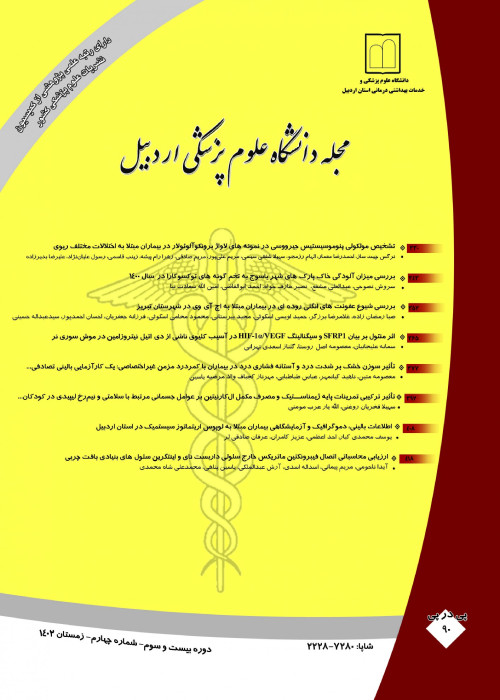Spatio-Temporal Distribution of Coronary Heart Disease by Geographic Information System Arc GIS in Ardabil Province
Author(s):
Abstract:
Background and Objectives
Coronary artery disease (CAD) is the most common cause of mortality and disability around the world. Determination of the health status and spatial and temporal patterns of the disease prevalence has a major role in health planning. This study aimed to investigate the spatiotemporal pattern of CAD in Ardabil Province.Methods
This descriptive and cross-sectional study was performed using the data belonging to 60156 patients with history of hospital admission due to CAD in Ardabil Province during 2010-2015. Hospitalization Rate (HR) was calculated after classification of the data in terms of location and date of hospitalization. The spatiotemporal and demographic variables, including age, gender, type of CAD, periods and duration of hospitalization were analyzed by descriptive statistics, ANOVA and repeated measures in SPSS v23 statistical software. Spatial distribution maps were drawn for each month and year in ArcGIS 10.2.Results
Of 60156 hospitalized patients with CAD diagnosis, men (58%) were more in number than women (42%). The majority of hospitalized patients fell in the age range 60-69 years (25.3%), and 92.40% of patients were hospitalized for less than 7 days. An ascending pattern was observed in temporal hospitalization trend in Khalkhal and a descending trend in Ardabil. The lowest hospitalization rate, however, was observed in Kosar city despite the ascending trend. During the research period, the greatest decline in hospitalization rate was observed in temporal trend in Bilasuvar, Meshkinshahrand Namin cities, and the largest increase was observed in Germi, Pars-Abad and Kosar cities.Conclusion
By using the comprehensive technology, GIS, spatiotemporal distribution and CAD trend during 2011-2015 were modeled in Ardabil province. Spatiotemporal trend of CAD in Ardabil province and allied cities indicated the necessity of paying more attention and studying community for further prevention of the disease. Community-based interventions should be implemented for prevention of risk factors of CAD during childhood and adolescence especially in the districts with high risk. Keywords:
Language:
Persian
Published:
Journal of Ardabil University of Medical Sciences, Volume:17 Issue: 64, 2017
Pages:
174 to 188
magiran.com/p1724223
دانلود و مطالعه متن این مقاله با یکی از روشهای زیر امکان پذیر است:
اشتراک شخصی
با عضویت و پرداخت آنلاین حق اشتراک یکساله به مبلغ 1,390,000ريال میتوانید 70 عنوان مطلب دانلود کنید!
اشتراک سازمانی
به کتابخانه دانشگاه یا محل کار خود پیشنهاد کنید تا اشتراک سازمانی این پایگاه را برای دسترسی نامحدود همه کاربران به متن مطالب تهیه نمایند!
توجه!
- حق عضویت دریافتی صرف حمایت از نشریات عضو و نگهداری، تکمیل و توسعه مگیران میشود.
- پرداخت حق اشتراک و دانلود مقالات اجازه بازنشر آن در سایر رسانههای چاپی و دیجیتال را به کاربر نمیدهد.
In order to view content subscription is required
Personal subscription
Subscribe magiran.com for 70 € euros via PayPal and download 70 articles during a year.
Organization subscription
Please contact us to subscribe your university or library for unlimited access!


